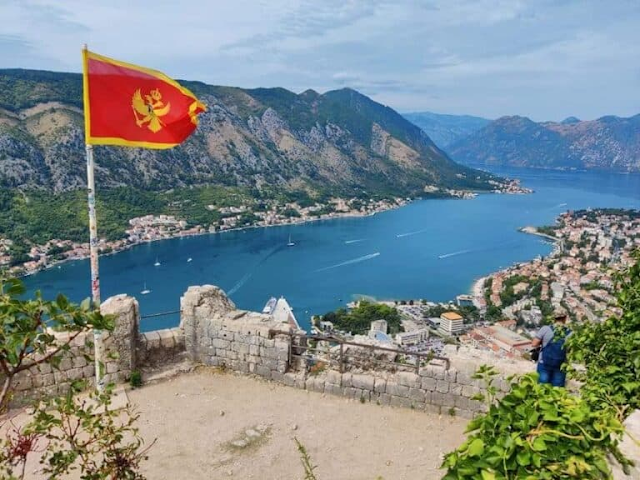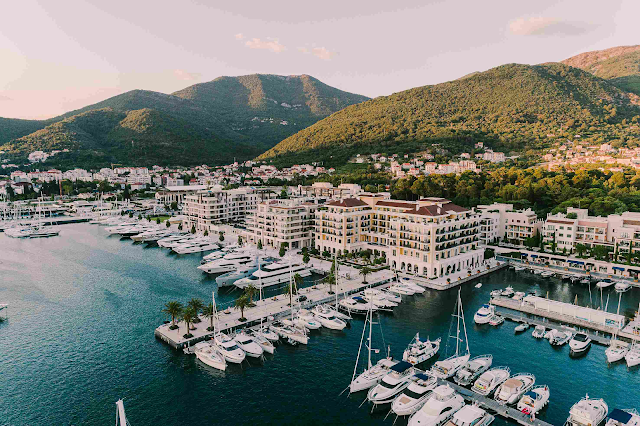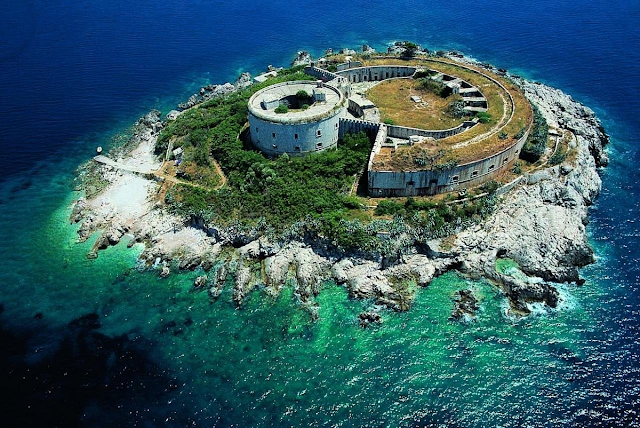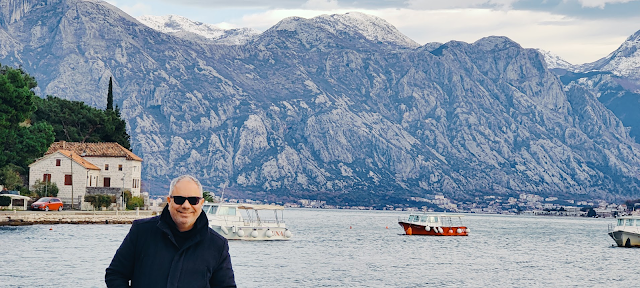✈️ Uri Travel ✈️
🇲🇪 Montenegro 🇲🇪
Asia
🇮🇳 India - Mumbai
🇮🇳 India - Pune
🇮🇱 Israel
🇸🇬 Singapore
🇦🇪 United Emirates - Dubai
Europe
🇨🇾 Cyprus - Paphos
🇨🇿 Czech Republic - Prague
🇩🇰 Denmark
🇬🇧 England - London
🇫🇷 France - Paris
🇬🇪 Georgia - Batumi
🇩🇪 Germany - Berlin
🇬🇷 Greece - Athens
🇭🇺 Hungary - Budapest
🇮🇹 Italy - Rome
🇲🇪 Montenegro
🇳🇱 Netherlands - Amsterdam
🇵🇱 Poland - Warsaw
🇷🇴 Romania
🇷🇸 Serbia - Belgrade
🇪🇸 Spain - Barcelona
🇪🇸 Spain - Madrid
Although not a member of the European Union, Montenegro officially uses the Euro as its currency.
The country boasts a beautiful Adriatic coastline, featuring sandy beaches, serene bays, and picturesque coastal towns such as Budva and Kotor. While most travelers visit during the summer to enjoy the warm weather, we chose to travel in winter to experience the snow and the magical Christmas markets, even though it's considered the off-season.
I’d like to start the blog with a few key points:
👫 The People
Montenegrins are incredibly kind and hospitable. Known for their friendly demeanor, they make visitors feel truly welcome.
🌤️ The Best Time to Visit Montenegro
The ideal time to visit depends on the type of experience you're seeking:
-
Spring (April – June): Perfect for exploring nature, visiting national parks like Durmitor and Lake Skadar, and strolling through historic towns such as Kotor and Budva.
-
Summer (July – September): Peak tourist season! The beaches along the Adriatic coast are ideal for swimming, water sports, and sunbathing—perfect for beach lovers.
-
Autumn (September – November): Enjoy mild weather, fewer tourists, and lower prices compared to the summer season.
-
Winter (December – March): Ideal for ski enthusiasts and lovers of winter landscapes. While this is not the main tourist season and some attractions may be closed, you can enjoy Christmas markets, snow, and winter activities.
🚧 Road Conditions
The road infrastructure is quite poor, with narrow, poorly lit, and rugged roads. Driving, especially in snowy conditions, can be challenging and unfamiliar for Israeli drivers.
Location on the Map 🌍
Best Time to Visit:
- Spring or early summer is the ideal time to visit, as the waterfall flows more robustly due to snowmelt and rainfall. During the drier months, the water flow might be less dramatic.
Getting There:
Located just a short drive (about 10 km) from Podgorica, the falls are easily accessible by car or taxi (No Public transportation).
Best Time to Visit
- Spring and Summer: Ideal for enjoying the lake, boat tours, and outdoor activities.
- Autumn: Offers cooler weather and fewer crowds.
- Winter: The village is less lively, but the tranquility and beauty of the area remain stunning year-round.
- The viewpoint is approximately 30 km from Podgorica and 20 km from Cetinje.
- Access is via a narrow, winding mountain road. Although the drive can be challenging, the stunning views are well worth the effort.
- Parking is available near the viewpoint.
Best Time to Visit
- Spring and Early Summer: The greenery is vibrant, and the weather is pleasant.
- Autumn: Offers cooler temperatures and stunning fall colors in the surrounding hills.
- Sunrise or Sunset: These times provide the most magical lighting for photography.
Historic Significance
- The village is named after Ivan Crnojević, a 15th-century Montenegrin ruler who founded the village and made it his winter residence. It played an important role as a trading hub in the region.
- During the 19th century, Rijeka Crnojevića was a key center for Montenegro’s printing and publishing industry.
Stone Bridge
- One of the village’s most iconic landmarks is the Danilo Bridge, built in 1853 by prince Danilo. This beautiful stone bridge is a symbol of the village and offers stunning views of the river.
Scenic Beauty
- Rijeka Crnojevića is surrounded by lush hills, clear waters, and unspoiled nature. The tranquil setting makes it ideal for photography, relaxation, and connecting with Montenegro’s natural charm.
Wildlife and Nature
- Located within the Lake Skadar National Park, the area is home to diverse bird species, including pelicans and herons, as well as rich aquatic life.
Boat Rides
- The village is a popular starting point for boat tours along the Crnojević River and Lake Skadar. These rides offer close-up views of the meandering river, lily-covered waters, and the surrounding landscapes.
Authentic Montenegrin Cuisine
- Several local restaurants by the river serve fresh fish, homemade bread, and traditional Montenegrin dishes. Dining here offers not only delicious food but also spectacular views.
How to Get to Rijeka Crnojevića
- Located about 20 km from Cetinje and 30 km from Podgorica, the village is easily accessible by car. The drive includes scenic routes through the Montenegrin countryside.
- Roads are narrow and winding, so caution is advised, especially in winter.
How to Visit Sveti Stefan
- Access: The islet itself is private and exclusively for hotel guests, but you can enjoy the view and nearby beaches as a day visitor.
- Getting There: Sveti Stefan is easily accessible by car or taxi from Budva (10-15 minutes) or Podgorica (around an hour).
- Best Viewpoint: The elevated spots on the Adriatic Highway above Sveti Stefan provide the most iconic photo opportunities.
History of Budva Old Town
- Ancient Origins: Budva is believed to be one of the oldest cities in the Adriatic, with roots dating back to the 5th century BC. Greek colonists and later Romans significantly influenced the town.
- Venetian Rule: During the Venetian period (15th–18th centuries), Budva flourished as a coastal trading hub. The Venetian influence is still evident in its architecture and urban layout.
- Earthquake of 1979: A devastating earthquake severely damaged the Old Town. However, it was meticulously restored to its original appearance, preserving its historical charm.
The Legend Behind the Dancing Girl
The statue is shrouded in local legend, adding to its allure:
The Tale of the Ballerina: According to one story, the statue commemorates a young girl who danced on the beach every day while waiting for her lover, a sailor, to return. Sadly, he never came back, but she remained faithful, dancing until her last days. The statue is said to represent her devotion and grace.
A Symbol of Balance: Another interpretation is that the statue represents the balance between human life and nature, as it seamlessly blends into its picturesque surroundings.
8. Best View of KotorThe Best View of Kotor offers a breathtaking panorama of Bay of Kotor (also known as Boka Kotorska). This bay is one of the most beautiful places in Montenegro and all of Europe. It is a unique bay that resembles a fjord but was actually formed by the sinking of an ancient river. The bay is considered one of the must-see attractions in Montenegro, thanks to its stunning views, rich history, and picturesque towns that line its shores.
The road leading to the viewpoint is narrow and winding, resembling a snake-like path with partial visibility. It is not recommended to visit during the winter due to dangerously high winds. However, during the summer months, you can take the cable car for a more comfortable and scenic ride to the top.
The road leading to the viewpoint is narrow and winding, resembling a snake-like path with partial visibility. It is not recommended to visit during the winter due to dangerously high winds. However, during the summer months, you can take the cable car for a more comfortable and scenic ride to the top.
9. Kotor Cable CarThe Kotor Cable Car is a remarkable attraction, offering an 11-minute journey over from the lower station in Dub to the upper station at Kuk, near Lovćen National Park. This ride provides panoramic views of the Bay of Kotor and the surrounding mountains, ascending to 1,316 meters above sea level.
👓Watch the Video👓
10. Kotor FortressKotor fortress, also known as San Giovanni Fortress, is located above the Old Town of Kotor, overlooking Bay of Kotor.
The fortress was built during the Venetian period (15th–18th centuries) as part of the city's defense system against invasions. It served as a strategic position throughout history.
The walls surrounding the fortress stretch for about 4.5 km and rise to a height of about 280 meters above sea level. From the top of the fortress, visitors can enjoy a breathtaking view of Kotor city, the Bay of Kotor, and the surrounding mountains. Inside the fortress, there are remains of ancient structures, towers, and observation points that were used by the guard soldiers.
The climb to the fortress involves ascending around 1,350 steps on a steep path.
There are no purchasing facilities along the way, so it's advisable to bring water with you. The hike is recommended for those in good physical condition, as it is a physically challenging ascent that may not be suitable for everyone.
The fortress was built during the Venetian period (15th–18th centuries) as part of the city's defense system against invasions. It served as a strategic position throughout history.
The walls surrounding the fortress stretch for about 4.5 km and rise to a height of about 280 meters above sea level. From the top of the fortress, visitors can enjoy a breathtaking view of Kotor city, the Bay of Kotor, and the surrounding mountains. Inside the fortress, there are remains of ancient structures, towers, and observation points that were used by the guard soldiers.
The climb to the fortress involves ascending around 1,350 steps on a steep path.
There are no purchasing facilities along the way, so it's advisable to bring water with you. The hike is recommended for those in good physical condition, as it is a physically challenging ascent that may not be suitable for everyone.
The Old Town is a maze of cobblestone streets, charming alleys, and small squares filled with cafes, restaurants, and souvenir shops. Everywhere you turn, you’ll feel as though you've stepped back in time to the Middle Ages.
Visitors can climb the impressive walls that surround the city, reaching the San Giovanni Fortress, which sits about 260 meters above sea level. The hike is challenging, but the panoramic view from the top of the fortress over the bay is absolutely worth the effort.
The marina was built on the site of an old Yugoslav naval shipyard and has undergone massive development by international investors. The complex is home to international luxury brands such as Rolex, Dolce & Gabbana, and Bvlgari, as well as local boutique stores.
In addition to its high-end shopping, Porto Montenegro offers world-class dining, entertainment, and hospitality, making it a popular destination for those seeking luxury and leisure in a stunning coastal setting.
The following attractions are accessible only by boat:
13. The Blue Cave (Accessible by boat only)14. Mamula Island (Accessible by boat only)
15. Former Submarine Tunnel (Accessible by boat only)
16. Our Lady of the Rocks (Accessible by boat only)
13. The Blue Cave (Accessible by boat only)
The Blue Cave (Plava Špilja) in Montenegro is one of the country’s most stunning natural attractions. Located on the Lustica Peninsula, near the entrance of Kotor Bay, this cave is famous for its mesmerizing blue waters, created by sunlight reflecting off the sandy seabed.
Why Visit the Blue Cave?
- 🌊 Brilliant Blue Waters – The cave glows with an intense blue hue, perfect for swimming and photography.
- 🚤 Exciting Boat Tours – Accessible only by boat, with many tours departing from Kotor, Budva, or Herceg Novi.
- 🏊 Unique Swimming Experience – Jump into crystal-clear waters inside the cave for an unforgettable dip.
- 🏝️ Nearby Attractions – Combine your visit with trips to Mamula Island (an abandoned fortress) and the secluded Žanjice Beach.
Best Time to Visit
- Summer (June–September) – Ideal for boat tours and swimming, with the best light conditions around midday.
Why Visit Mamula Island?
- 🏰 Historic Fortress – Originally built as a military stronghold, later used as a WWII prison.
- 🌊 Crystal-Clear Waters – Great for swimming, snorkeling, and diving.
- 🚤 Scenic Boat Trips – Tours often include stops at the Blue Cave and Žanjice Beach.
- 🍽️ Luxury Retreat – The fortress has been transformed into a high-end resort with a spa, fine dining, and cultural experiences.
The tunnel was used to hide submarines during the Balkan conflict, and its construction was part of Yugoslavia's military preparations during the Cold War. The tunnel is located in a secluded area, so access is possible only through boat tours departing from the bay of Kotor, Herceg Novi, or nearby viewpoints.
The island is home to the Our Lady of the Rocks Church, completed in the 17th century. The church is famous for its stunning frescoes and the unique tradition of sailors and fishermen who, for centuries, placed rocks in the bay as a tribute to the Virgin Mary. Today, the church and the island are major tourist attractions, drawing visitors for their historical, religious, and scenic significance.
The island is accessible by boat and remains one of the most iconic landmarks in the Bay of Kotor.
Situated at a strategic point in the bay, Perast provides a direct view of the surrounding mountains and the blue bay. The islands opposite the town, Our Lady of the Rocks and Saint George, add to the place's charm.
Perast has a rich maritime heritage. The town was once a hub for maritime trade, and visitors can explore the stories and history of local sailors and traders who once ruled the bay.
The town is small enough to be explored on foot from end to end in twenty to thirty minutes. It’s better not to drive into the town; parking is available at the northern or southern ends of Perast.





























